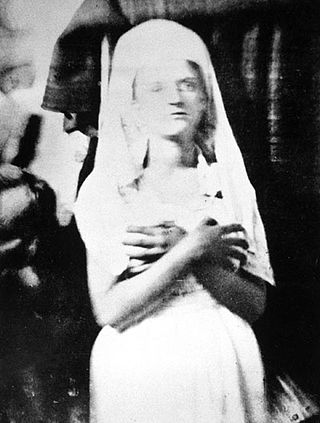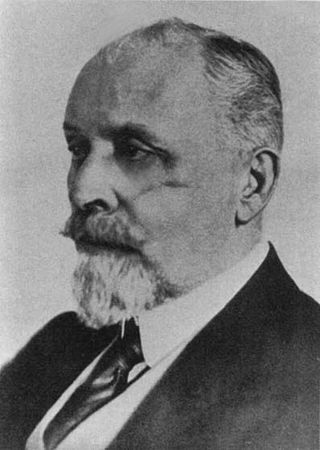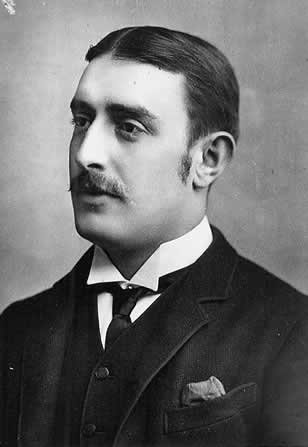
Ethel Post-Parrish (died 1960) was an American Spiritualist medium.

Ethel Post-Parrish (died 1960) was an American Spiritualist medium.
In 1932 Parrish founded Camp Silver Belle a Spiritualist summer camp situated at Mountain Springs Hotel in Ephrata, Pennsylvania. [1] In her séances Parrish claimed to materialize her spirit guide an Indian girl known as Silver Belle. [2]
In a séance at Ephrata, Pennsylvania, in 1953, Parrish materialized her spirit guide Silver Belle whilst sitting in her curtained cabinet. The pictures claimed to be taken at 50 second intervals in infra-red light by photographer Jack Edwards, show Silver Belle growing from a cloud of "ectoplasm". [3]
A related spiritualist camp known as Camp Chesterfield in Anderson, Indiana was managed by Mabel Riffle the cousin of Parrish. The camp was exposed in 1960 as infra red film had revealed that the materialized figures were all human and had entered the séance room through a side door. [4] [5]
Camp Silver Belle was also practicing fraudulent mediumship, and had been exposed in various newspapers. Before exposures the camp took in up to a million dollars a year. [6]
The photographs taken by Jack Edwards of Silver Belle materializing were discovered to be a hoax. A photograph was taken of smoke and by a double exposure a cardboard figure was superimposed onto it. The woman standing outside the cabinet curtain was also an accomplice involved in the deception. [7]

Spiritualism is a social religious movement primarily popular in the nineteenth and early twentieth centuries according to which an individual's awareness persists after death and may be contacted by the living. The afterlife, or the "spirit world", is seen by spiritualists not as a static place, but as one in which spirits continue to evolve. These two beliefs—that contact with spirits is possible, and that spirits are more advanced than humans—lead spiritualists to the belief that spirits are capable of providing useful insight regarding moral and ethical issues, as well as about the nature of God. Some spiritualists speak of a concept which they refer to as "spirit guides"—specific spirits, often contacted, who are relied upon for spiritual guidance. Emanuel Swedenborg has some claim to be the father of spiritualism.

A séance or seance is an attempt to communicate with spirits. The word séance comes from the French word for "session", from the Old French seoir, "to sit". In French, the word's meaning is quite general: one may, for example, speak of "une séance de cinéma". In English, however, the word came to be used specifically for a meeting of people who are gathered to receive messages from ghosts or to listen to a spirit medium discourse with or relay messages from spirits. In modern English usage, participants need not be seated while engaged in a séance.

In Spiritualism, paranormal literature and some religions, materialization is the creation or appearance of matter from unknown sources. The existence of materialization has not been confirmed by laboratory experiments. Numerous cases of fraudulent materialization demonstrations by mediums have been exposed.
The Eddy Brothers were William and Horatio Eddy, two American mediums best known in the 1870s for their alleged psychic powers. Magicians and skeptics dismissed the Eddy brothers "spirit" materializations as blatant frauds.

Mediumship is the pseudoscientific practice of mediating communication between familiar spirits or spirits of the dead and living human beings. Practitioners are known as "mediums" or "spirit mediums". There are different types of mediumship or spirit channelling, including séance tables, trance, and ouija. The practice is associated with spiritualism and spiritism. A similar New Age practice is known as channeling.

Eusapia Palladino was an Italian Spiritualist physical medium. She claimed extraordinary powers such as the ability to levitate tables, communicate with the dead through her spirit guide John King, and to produce other supernatural phenomena.

Katie King was the name given by Spiritualists in the 1870s to what they believed to be a materialized spirit. The question of whether the spirit was real or a fraud was a notable public controversy of the mid-1870s.

Spirit photography is a type of photography whose primary goal is to capture images of ghosts and other spiritual entities, especially in ghost hunting. It dates back to the late 19th century. The end of the American Civil War and the mid-19th Century Spiritualism movement contributed greatly to the popularity of spirit photography. Photographers such as William Mumler and William Hope ran thriving businesses taking photos of people with their supposed dead relatives. Both were shown to be frauds, but "true believers", such as Sir Arthur Conan Doyle, refused to accept the evidence as proof of a hoax.

Florence Eliza Cook was a medium who claimed to materialise a spirit, "Katie King". The question of whether the spirit was real or a fraud was a notable public controversy of the mid-1870s. Her abilities were endorsed by Sir William Crookes but many observers were skeptical of Crookes's investigations, both at the time and subsequently.

William Hope was a pioneer of so-called "spirit photography". Based in Crewe, England, he was a member of the well known spiritualists group, the Crewe Circle. He died in Salford hospital on 8 March 1933.

In spiritualism, ectoplasm, also known as simply ecto, a substance or spiritual energy "exteriorized" by physical mediums. It was coined in 1894 by psychical researcher Charles Richet. Although the term is widespread in popular culture, there is no scientific evidence that ectoplasm exists and many purported examples were exposed as hoaxes fashioned from cheesecloth, gauze or other natural substances.

Albert Freiherr von Schrenck-Notzing was a German physician, psychiatrist and notable psychical researcher, who devoted his time to the study of paranormal events connected with mediumship, hypnotism and telepathy. He investigated Spiritualist mediums such as Willi Schneider, Rudi Schneider, and Valentine Dencausse. He is credited as the first forensic psychologist by Guinness World Records.

Eva Carrière, also known as Eva C, was a fraudulent materialization medium in the early 20th century known for making fake ectoplasm from chewed paper and cut-out faces from magazines and newspapers.

Camp Chesterfield was founded in 1891 and is the home of the Indiana Association of Spiritualists, located in Chesterfield, Indiana. Camp Chesterfield offers Spiritualist Church services, seminary, and mediumship, faith healing, and spiritual development classes, as well as psychic readings for patrons.
Alexander Frederick Harris (1897–1974) was a Welsh spiritualist and medium.
Rita Goold was a British psychic and spiritualist medium from Leicester.
Cecil Husk (1847-1920) was a British professional singer and spiritualist medium.

Jan Guzyk (1875–1928), also known as Jan Guzik was a Polish spiritualist medium known for his alleged ability of psychokinesis. Guzyk was exposed as a fraud by psychical researchers Harry Price and Max Dessoir.

William Eglinton (1857–1933), also known as William Eglington was a British spiritualist medium who was exposed as a fraud.

Kathleen Goligher was an Irish spiritualist medium. Goligher was endorsed by engineer William Jackson Crawford who wrote three books about her. She was exposed as a fraud by physicist Edmund Edward Fournier d'Albe in 1921.